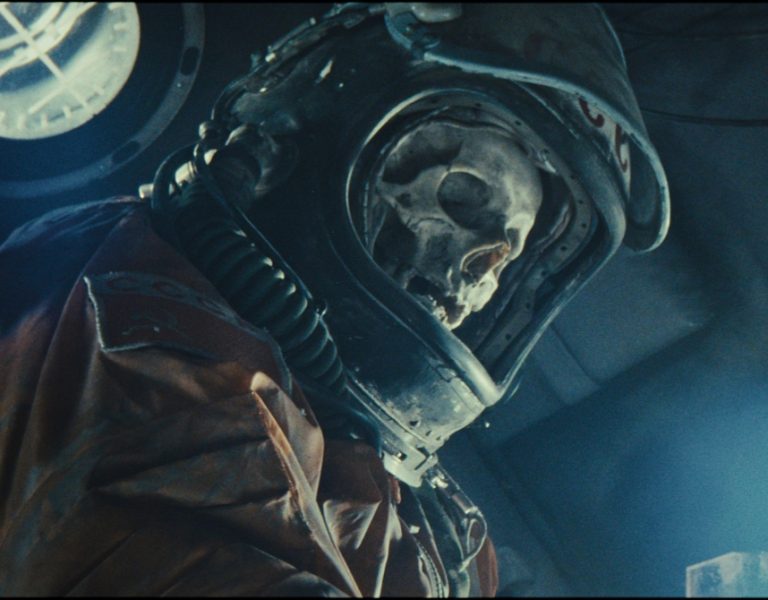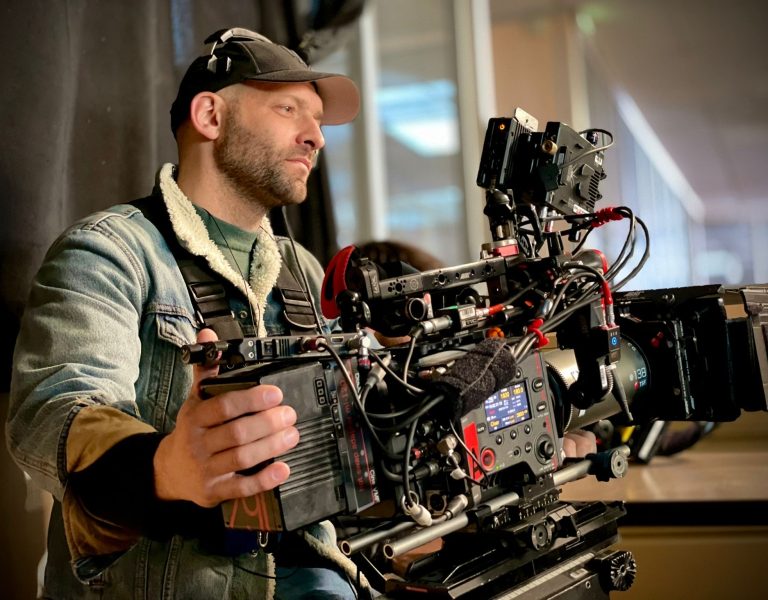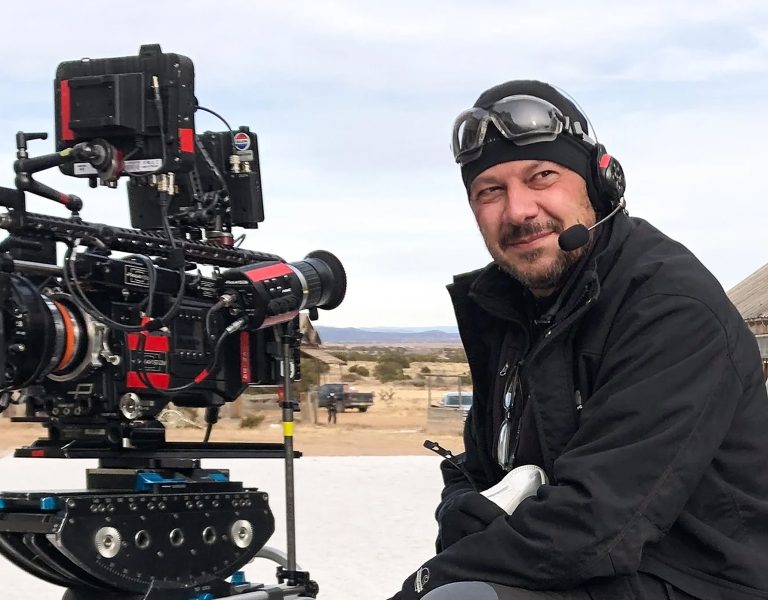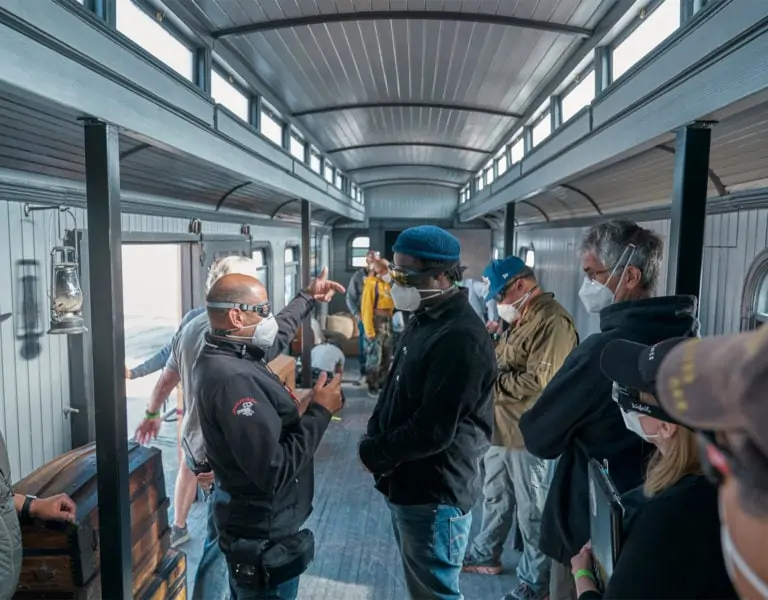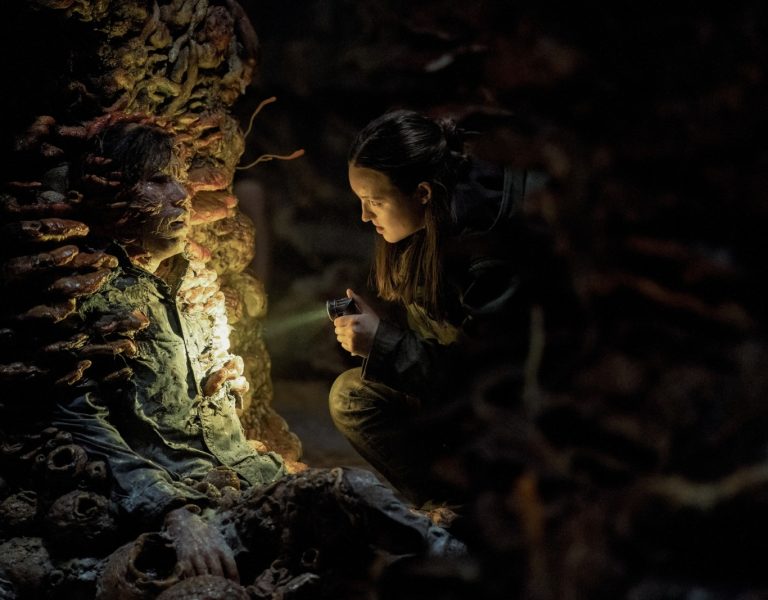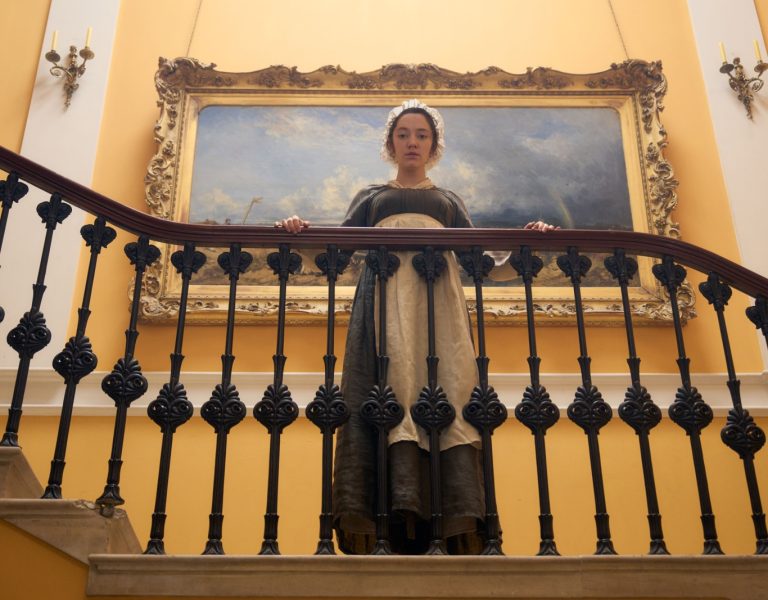DARING ORIGINALITY
The result of an ambitious concept decades in the making, Megalopolis reunited Francis Ford Coppola with Mihai Mălaimare Jr. ASC to bring a bold vision of an epic Roman tale transported to an imagined modern America to the big screen.
Francis Ford Coppola views filmmaking as play rather than work because for the director “play is where human beings discover their most important visual ideas”. He had a clear vision of what his latest creative process of play, Megalopolis, should look like when he began developing it in the ‘80s.
With a concept loosely inspired by the Catilinarian Conspiracy of 63 BC during which a popular Roman aristocrat, Lucius Sergius Catiline, attempted to overthrow the Roman Republic, Coppola and cinematographer Ron Fricke (Baraka, Koyaanisqatsi) shot second unit footage in and around New York City in 2001. But then the 9/11 tragedy halted the project and Coppola could not contemplate making a film about the possibility of utopia in New York at a time of such disaster and uncertainty.

Fast forward to 2021 and Coppola, aged 80, revisited the project and decided to self-finance it by selling some of his wine business as he could not resist exploring the story in cinematic form. Taking place in a stylised New York City doubling as the city of New Rome, the story would centre on the conflict between talented artist Cesar Catilina (Adam Driver) who desires a utopian future, and greedy mayor Franklyn Cicero (Giancarlo Exposito).
“I wanted it to be at first like a woven mural or tapestry rather than a movie, so I needed imagery that could express this elusive feeling,” he says. Coppola found working with visual concept designer Dean Sherriff to create keyframes for scenes to be a successful process as the artist was receptive to his ideas and “stick-figure sketches” and the visuals he produced based on them aligned with his vision of the Megalopolis world.
Joining Sherriff in the team helping Coppola achieve his desire of “daring originality” and a look he had never seen before were director of photography Mihai Mălaimare Jr. ASC, production designers Bradley Rubin and Beth Mickle, and costume designer Milena Canonero.

Coppola is “very comfortable” with working with Mălaimare, having collaborated many times, first when the cinematographer had just graduated from film school. Spending the past 19 years working on productions such as Youth Without Youth (2007) and Tetro (2009), has allowed the pair to established a visual style.
“Francis and I developed a visual language early on with Youth Without Youth. Inspired by Yasujiro Ozu, the camera never moves. If someone is sitting in the scene and stands up, we would never follow, tilt or reframe, we would place a second camera at the standing height. The idea seamed restrictive but it forced us to compose better, more like still photography. We would eventually have some dolly shots but they had to be done for a very good reason as they would stand out within all the frozen composition. We ended up using this visual style for Tetro and Twixt as well,” says Mălaimare.
“When we first started talking about Megalopolis, Francis told me he would like to move the camera a little more this time. He was interested in certain floating crane moves and dolly shots but still keeping the bulk of the coverage locked. Still minimising the panning and tilting.”

Mălaimare has enjoyed the “interesting dynamic” that evolved between the filmmakers over the decades and Coppola “pushing you out of your comfort zone sometimes and coming up with a crazy idea you then realise is great”.
He adds: “In 2005, while in prep for Youth Without Youth, I remember seeing this amazing image – a man and a woman on a giant clock face on top of the city. I was told it was an art concept for Megalopolis, a movie that Francis never made. It was so visually striking, I could never forget it.
“Francis worked with Dean Sherriff creating art key frames that became a visual map for the entire movie. They weren’t just references but precise cues for the way he saw the movie. Composition, colour, lighting, every guide you could wish for. It became a very strong foundation to build upon.”
Sketches and architectural drawings, which were also part of the original artwork, were blended seamlessly with footage captured in camera. “Many filmmakers also tend to, especially with VFX or even in-camera, try to be so perfect and make the VFX so real, but Francis has always pushed us to make it more like a poetic reality than hyperreal visual effects. And I think it blended well with the keyframes.”

Creative ambitions
Coppola stressed early on he wanted Megalopolis to have an IMAX release, leading to extensive camera testing and a realisation of how different an IMAX theatre is to regular cinemas. “We decided to do tests and screen them at the IMAX headquarters really early because if you go by specs there are a lot of cameras that can hold the resolution. IMAX is a 4K projection and we didn’t want to exclude any cameras,” says Mălaimare. “But in my mind, IMAX is 65mm, so it was kind of obvious we’d gravitate towards the ARRI Alexa 65. And as soon as we saw shots captured by the Alexa 65 we knew that was the look we wanted.”
Having been impressed by Panavision’s support in the past and multitude of lens choices they offer, the DP paired the ARRI Rental-supplied Alexa 65 with detuned Panavision Panaspeeds and 17-29mm Sphero 65s for wide shots. “I usually like wide lenses and there’s nothing greater than going crazy wide on Alexa 65,” he adds. Following an extensive prep, the 72-day shoot began at at The Lux Stage – designed and commissioned by Lux Machina – at Trilith Studios in Georgia. When tackling a concept and production so epic in scale and ambition it was important that all departments approach the project step by step.
“Francis expressed he would like to use combined elements – nothing is 100% futuristic, but more a combination of old and new,” says Mălaimare. “This can be a blessing and a curse as you don’t know where to find references. But the key frames created for the most important scenes were an amazing visual map for everybody to realise all the elements he was interested in seeing in every scene, figure out a starting point, and then all navigate in the same direction. Francis worked on this movie for so long that a lot of it was just in his mind, so the keyframes enabled him to show us where he wanted to go.”

Being a director who enjoys achieving shots in camera when possible and experimenting with new techniques, Coppola wanted to push the boundaries once again. For instance, a driving scene where Cesar is being followed started as a basic two days shooting Poor Man’s Process on stage with rain and moving lights before expanding to incorporate moving stage pieces and statues.
Visual boundaries were also pushed for the 1:43 IMAX where tryptic imagery was designed for select scenes to fill the whole screen. When British Cinematographer saw one of the first screenings of Megalopolis at last year’s Cannes Film Festival another example of Coppola’s ambitious and creative filmmaking came in the form of a live performer walking on stage in front of the screen and engaging with Driver’s on-screen character, breaking the fourth wall. “Francis likes to experiment with techniques like that,” says Mălaimare. “In Distant Vision – our latest live cinema project, which was mainly a camera test – we shot live with 42 cameras.”
Surreal effects, halation and image distortion was created in some dream-like sequences by working with second unit director and cinematographer Roman Coppola who used a variety of tools and techniques including Lensbaby lenses, custom double split diopters made by Schneider in 2007 for Tetro, and applying grease to filters.

Alongside trusty crew members Mălaimare has collaborated with for the past 15 years such as 1st AC Shaun Mayor, DIT Eli Berg, and key grip Mackie Roberts, the cinematographer also credits B camera and Steadicam operator Henry Tirl for helping realise Coppola’s vision.
“I started out in operating and it’s hard for me to make a film any other way, so I always operate A camera and then work with a brilliant B camera and Steadicam operator, “ says Mălaimare. “I’ve been lucky so far and Henry Tirl is an excellent operator. I’m kind of lighting for what I’m framing and framing for the lighting of a scene. The collaboration with my DIT Eli also helps a lot because we’re on comms and he can see both cameras and knows what I’m looking for. “
While enjoying a fruitful collaboration with senior colourist Walter Volpatto on series Winning Time, Mălaimare told him he was keen to team up once again if filming on Megalopolis began. “Sometimes when you start a colour session an approach is to go as crazy as possible and then try to tone it down, but Walter likes to go step by step which I prefer because if there are too many adjustments it can look overly processed. Between what we did on set with DIT Eli and what we ended up doing with Walter in the grade, we were all on the same page so it was a subtle correction instead of drastic changes.”

Making transitions
Megalopolis united Mălaimare with gaffer Jeff Murrell for the first time, a master of illumination who is experienced in a variety of situations, from large live light shows incorporating moving lights through to intimate set-ups featuring two or three actors. The cinematographer found Murrell’s knowledge of “coordinating different set-ups and offering the option to change things on the spot” invaluable.
A mixture of lighting fixtures were required to suit the variety of scenes, spanning big night exterior shots of a show in Madison Square Garden through to more intimate sequences. These included LED products such as Creamsource Vortex – which Mălaimare valued for their tracing and video mapping abilities – and SkyPanels and Chauvet moving lights.
“Stage lighting has been crossing into film for a while and we’ve been using moving lights for night shoots quite a lot, so it’s an easy transition,” says Mălaimare. “Most of the movers are LED and the skin tone looks better, so I think slowly they will become movie lights. Electricians need to have more IT and data management knowledge now, which is an interesting industry change.”
The elaborate Madison Square Garden performance was among the most complex sequences to light due to the nature of the show, number of fixtures, and only having a day to rig and prep. “We treated this scene like a big live concert so we did extensive lighting previz that would show us not only the look but also the number and placement of all fixtures. It was really important to know the look of the show even for the small intimate scenes that were happening simultaneously with the big performance in the background.”

Shooting on a volume, which Mălaimare experienced for the first time when shooting Megalopolis at Trilith Studios, can be a “useful tool” but, as the DP highlights, “it’s fine if you can prep everything in advance and commit to it but if you like to improvise – as Francis does – by seeing what the actors are doing, giving them as much freedom as possible, and find new ideas on the spot, it can take more time than usual”.
Three days were spent shooting three scenes on the volume at Trilith Studios – a process in which the cinematographer discovered lighting certain surfaces that reflect light to be successful “but some surfaces tended to be a little too flat and needed augmenting” when working on an LED stage.
For Mălaimare, there’s nothing more dangerous than being in a comfort zone – something he has luckily not experienced when making films with Coppola. “As soon as you work with a director who is willing to push you it makes you a better cinematographer and you should embrace it,” he says. “Working with Francis is interesting as there are so many unexpected moments and visuals. There’s always something new or that hasn’t been done before”. Every time he pushed me things looked better and that’s why it’s an interesting dynamic. He knows I secretly like to be pushed and can’t wait for those moments to happen.”



